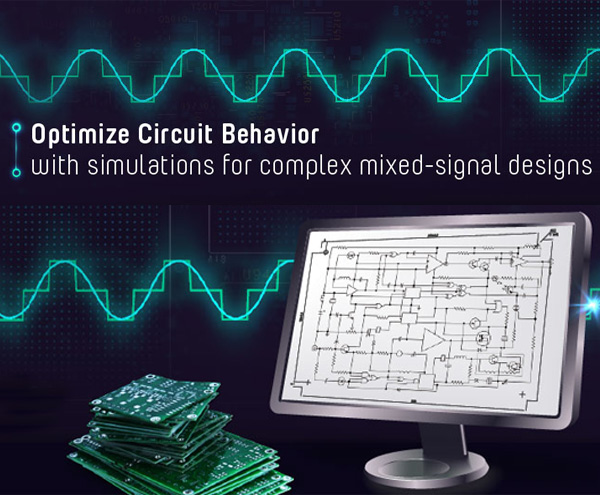High-Speed Signal Integrity
The use of high-speed designs is becoming widespread in hardware systems. The challenge of such designs is to maintain the quality of the signals over long distances on printed circuit boards and wire-harnesses. We employ signal integrity simulation to check the effectiveness of steps taken to ensure signal integrity. After designing a system with signal integrity in mind, the verification of signal integrity is required to establish standard compliance of the design.
Signal Integrity Analysis Capabilities
- Ringing (over/undershoots/monotonicity)
- Correct termination calculation and selection
- Design guidelines/stack-up optimization
- Reflections in interconnects
- Electromagnetic radiation from the traces
- Topology/transmission line characteristics
- Waveforms/eye-diagram/routing reports
- Crosstalk analysis
- Signal losses
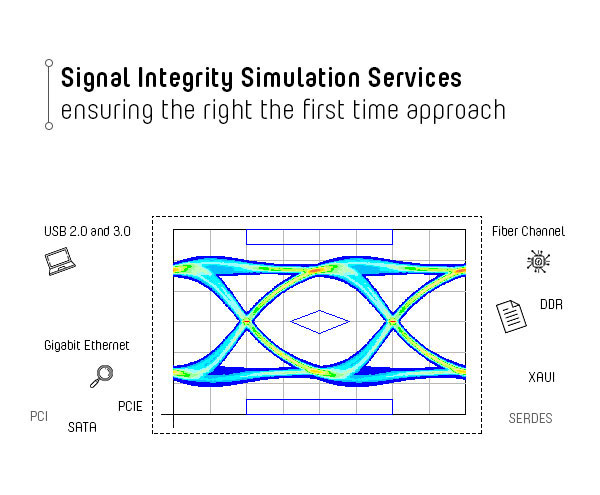
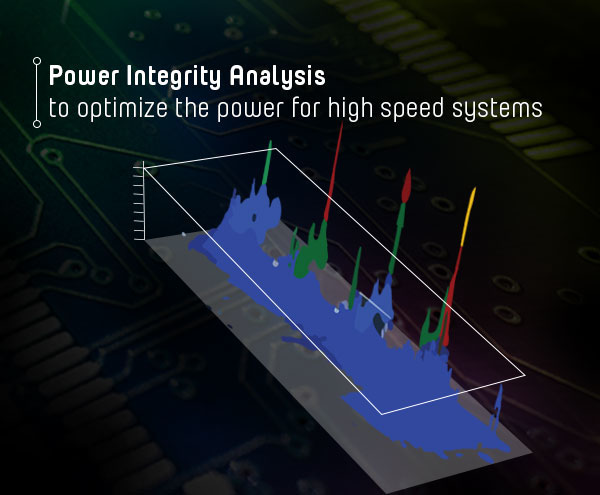
Power Integrity Analysis
Power Integrity is a critical issue in high-speed designs due to their higher switching rate. If your system designs include such component, you can benefit from our experience of high-speed designs. To maintain power integrity of such systems, we design our circuits so that the common-impedance coupling and common-mode switching noise are kept at the minimum level. This also helps to eliminate or minimize signal integrity problems related to power supply drop.
Power Integrity Analysis Capabilities
- Board design database set-up for analysis
- AC and transient analysis
- Single node analysis for optimization of capacitor placement
- DC and steady-state analysis
- Target impedance definition for reduced I2R losses
- Multi-node analysis to refine overall placement of the components
Thermal Analysis
While designing any real-world electrical, electronic, and mechanical and electro-mechanical system, thermal analysis can play an important role in determining the system’s thermal performance. Dissipating heat from high power density areas of electrical and electronic sub-assemblies and maintaining their temperature below the minimum allowed limit are fundamental for system health and reliability. We offer thorough thermal analysis services to achieve the desired results.
Thermal Analysis Capabilities
- Heat sink junction temperature analysis
- 3D airflow modeling and analysis
- Component and enclosure temperature analysis
- 3D temperature distribution patterns
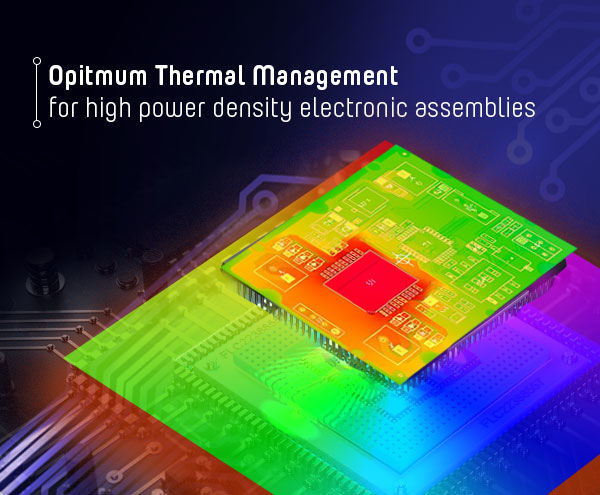
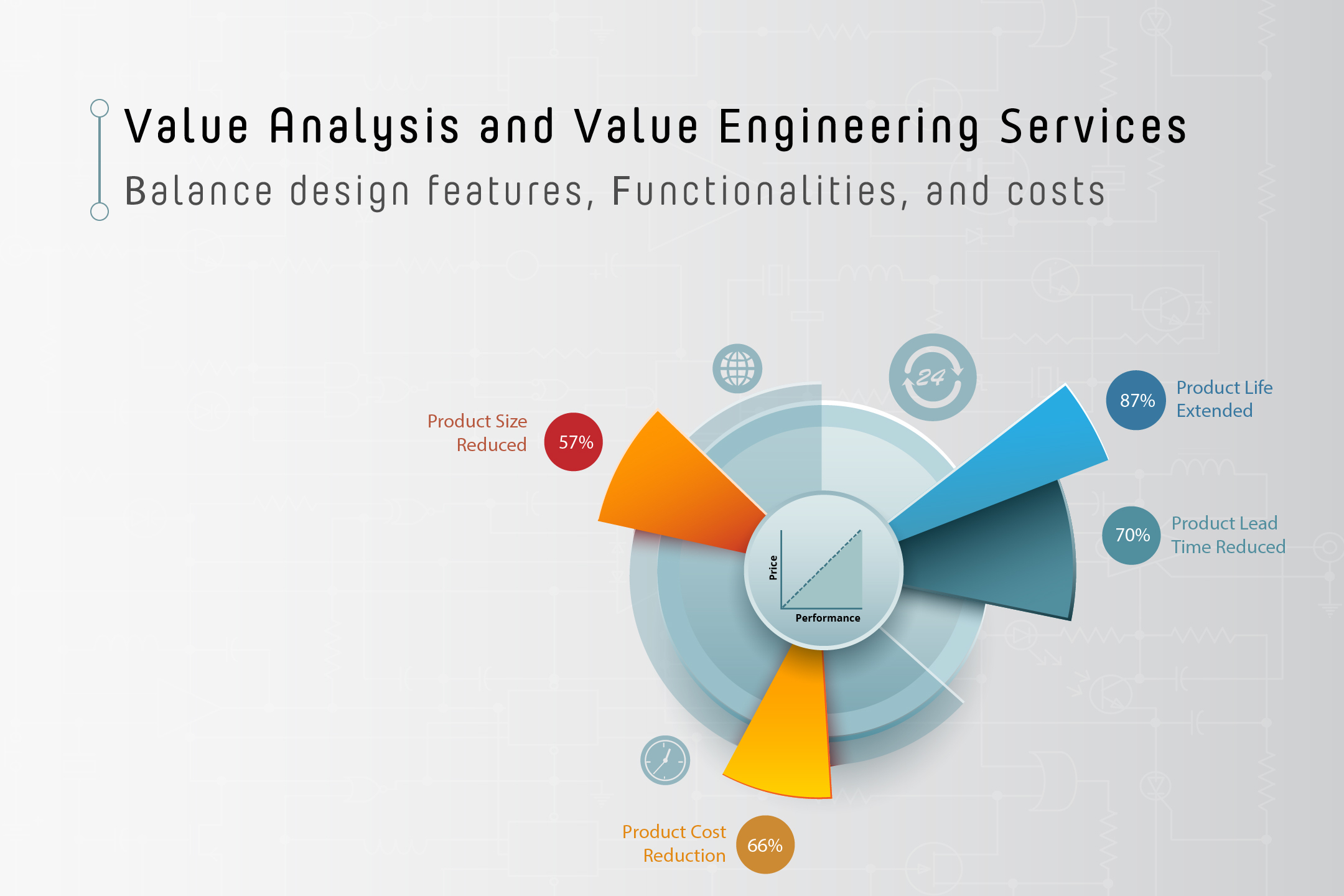
Value Analysis and Value Engineering
To support our customer’s product requirements, Powersoft19 has developed a full array of Value Analysis and Value Engineering (VAVE) services aimed at balancing the design features, functionalities and associated cost. The VAVE is a continuous process that spans over the whole product management life cycle, from concept to post-production reviews. Powersoft19 specializes in all aspects of VAVE from component engineering to product tear-down. Our optimized designs are geared toward being better in cost, profitability and efficiency.
Value Analysis and Value Engineering Capabilities
- Cost Reduction Analysis
- Bill of material analysis
- Electrical analysis
- Mechanical analysis
- Fabrication and assembly analysis
- Component Engineering
- Approved vendor list (AVL) expansion
- Cross vendor bill of material analysis
- Spend leverage analysis
- Restriction of hazardous materials / Waste electrical and electronic equipment (RoHS/WEEE)
- Obsolescence resolution
- Life cycle and risk analysis
- Service life and product longevity analysis
- Product Tear-Down
- Manufacturing assembly analysis
- Boothroyd Dewhurst techniques
- Competitive comparisons
- Reverse engineering
Circuit Behavior
At Powersoft19, PSPICE (LTSPICE, PSPICE, HSPICE, and XSPICE) is the de-facto standard simulation of a system design. Our engineers have expertise in simulating all complex mixed-signal designs containing both analog and digital circuitries.
Circuit Simulation Capabilities
- Worst-case scenarios
- Curve-fit optimization
- Monte-Carlo simulations
- Component stress/smoke simulations
